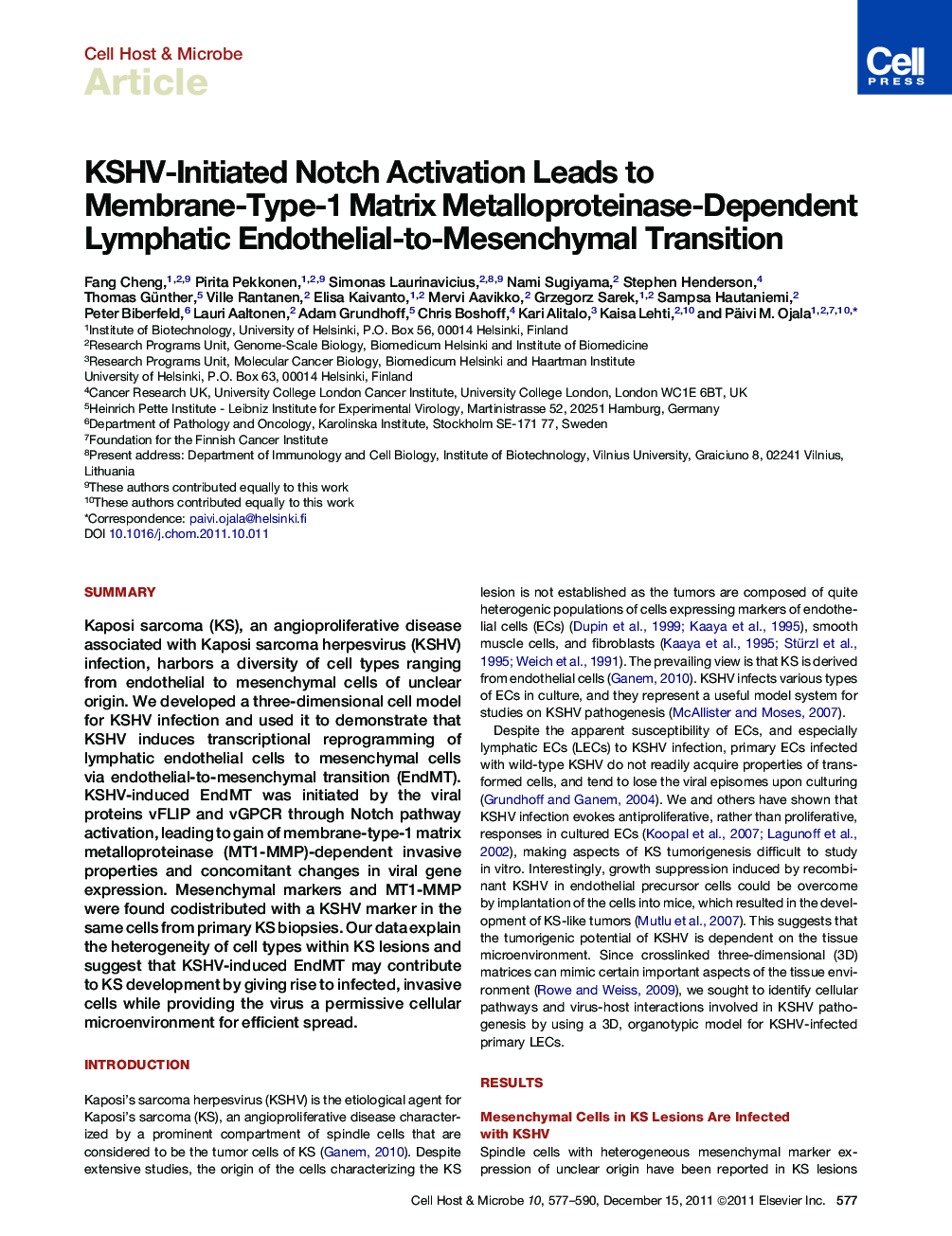| Article ID | Journal | Published Year | Pages | File Type |
|---|---|---|---|---|
| 4361309 | Cell Host & Microbe | 2011 | 14 Pages |
SummaryKaposi sarcoma (KS), an angioproliferative disease associated with Kaposi sarcoma herpesvirus (KSHV) infection, harbors a diversity of cell types ranging from endothelial to mesenchymal cells of unclear origin. We developed a three-dimensional cell model for KSHV infection and used it to demonstrate that KSHV induces transcriptional reprogramming of lymphatic endothelial cells to mesenchymal cells via endothelial-to-mesenchymal transition (EndMT). KSHV-induced EndMT was initiated by the viral proteins vFLIP and vGPCR through Notch pathway activation, leading to gain of membrane-type-1 matrix metalloproteinase (MT1-MMP)-dependent invasive properties and concomitant changes in viral gene expression. Mesenchymal markers and MT1-MMP were found codistributed with a KSHV marker in the same cells from primary KS biopsies. Our data explain the heterogeneity of cell types within KS lesions and suggest that KSHV-induced EndMT may contribute to KS development by giving rise to infected, invasive cells while providing the virus a permissive cellular microenvironment for efficient spread.
Graphical AbstractFigure optionsDownload full-size imageDownload high-quality image (291 K)Download as PowerPoint slideHighlights► KSHV induces mesenchymal reprogramming of lymphatic endothelial cells (LECs) in 3D ► KSHV-activated Notch-MT1-MMP axis regulates LEC reprogramming ► KSHV-reprogrammed LECs are invasive ► 3D microenvironment of infected LECs leads to viral gene expression changes
